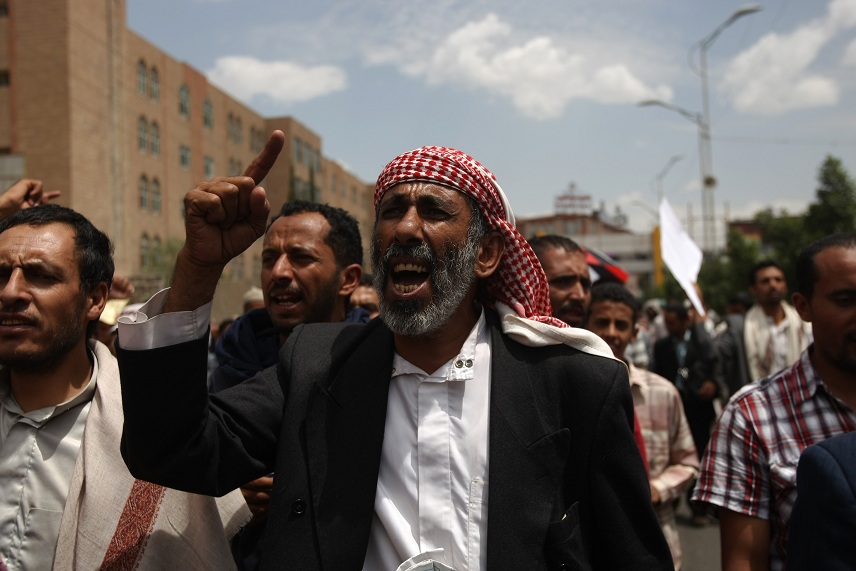CAIRO: Egypt’s recent announcement that it will kick-start its nuclear energy program, which had been shelved after the Chernobyl disaster in 1986, raises questions about the future of the country’s energy supplies.
Currently, Egypt’s energy comes primarily from oil, liquid natural gas (LNG) and hydroelectricity, with miniscule supplies coming from wind and other energy projects.
But in a country with year-round sunshine and an abundance of land on which to construct plants, experts, investors and anyone concerned with the country’s energy future are wondering why its greatest energy resource – the sun – is not being exploited.
As far back as the time of the Pharaohs, solar energy was a popular method of heating homes and generating hot water. Black pools of water were left to heat during the day before being funnelled through underground pipes at night.
Thousands of years later, solar power barely figures as a percentage on the country’s energy production chart, and is projected to figure at only 2 percent by 2010.
There are a number of reasons that the government and private investors have shied away from putting their capital behind solar energy.
The generation costs for a start are considerably higher than that of energy obtained from fossil fuels, and hydro and wind projects. Additionally, the process of converting solar energy into electricity is comparatively slow.
But according to Dr Hany Al-Nokraschy, Egyptian CEO of Germany-based solar energy research company Nokraschy Engineering, the factors responsible for the high costs and slow production are only temporary.
Government subsidizing of oil and gas, he told Daily News Egypt, raises the relative cost of solar energy, and puts off potential investors. As fossil fuels become scarcer and eventually run out, subsidies will become obsolete.
Solar energy will only become more cost efficient as production technologies become more sophisticated.
The head of The National Research Center’s Solar Energy department, Dr Nagwa Khattab, believes that the best way to introduce solar energy is to begin in places where energy consumption is low, such as rural and remote areas, as well as developing areas like those currently proliferating around the outskirts of Cairo.
Khattab told Daily News Egypt that as much as 10-15 percent of the country’s energy could be provided in this way in the short-term.
There are also a number of highly beneficial by-products to using solar energy, says Al-Nokraschy, including one that touches on the production of drinking water, arguably Egypt’s biggest concern in the coming years.
“Solar thermal generation has the great advantage that it can desalinate sea water with the waste heat, producing much desalted [drinkable] water – needed in the near future for the development of Egypt – at reasonable costs.
Al-Nokraschy adds that the solar energy production level, unlike wind and hydro, is “fully consistent with the seasonal trend, whereby higher consumption of electricity in the summer coincides with the country’s sunniest period.
Hussein Rizk, joint head of Solar Energy and Environment Technology in Maadi – a company that sells solar energy equipment for domestic and industrial use – points out that solar energy’s abundance and renewability is good for the environment too.
The solar panels Rizk sells consist of black fibreglass surfaces that attract the sun’s rays and pass the heat through to aluminium sheets attached to copper pipes, which channel the heat through a battery that converts it into electricity.
The panels are easily integrated into tiled roofs or can be set up adjacent to the building.
“All solar energy is environmentally friendly, Rizk told Daily News Egypt. “By definition you are not creating CO2 or any other gas so you are not depleting the earth’s resources.
But prohibitive prices make such facilities the preserve of the environmentally conscientious wealthy classes, and not practical for the vast majority of Egyptians.
There are some government-backed solar energy projects in the pipeline, most notably the World Bank-sponsored combined solar and gas plant in Kureymat, 90 km south of Cairo.
Kureymat will produce some 110 Megawatts of electricity using natural gas and another 40 using energy captured by a thermal solar field.
Al-Nokraschy says that the techniques that will be used in Kureymat’s solar production are far from optimal, meaning it will be extremely costly.
Nevertheless, with the proliferation of solar energy projects, he estimates that solar energy should account for at least 36 percent of Egypt’s energy by 2050.
“This is very modest and should be achievable.
Khattab believes that with the right attitude toward energy policy and adequate governmental support, Egypt’s solar energy supplies could rise to over 50 percent.
“The applications are ready but we need the right policies toward renewable energy in Egypt to implement them. But we are talking long, long term.
As it stands Egypt’s production of renewable energy is quite impressive, about double that of Germany’s, one of Europe’s ‘greenest’ countries.
With the full exploitation of solar energy, Egypt’s energy future has the potential to be greener, and brighter, still.


